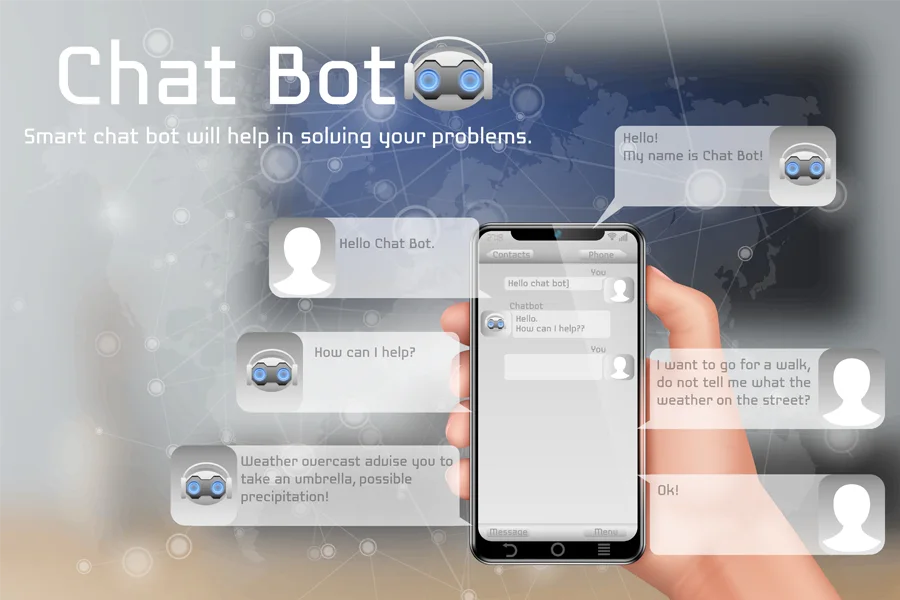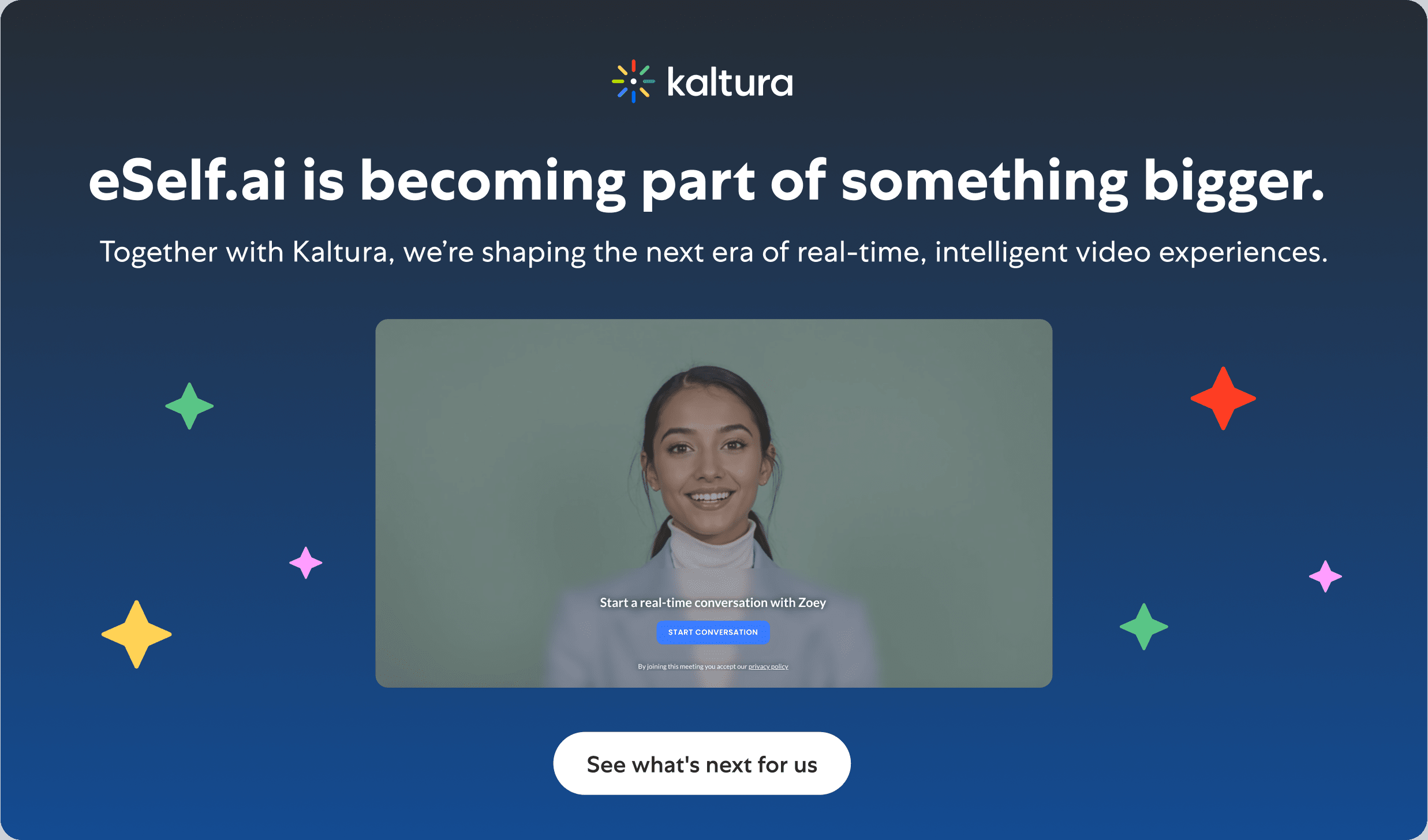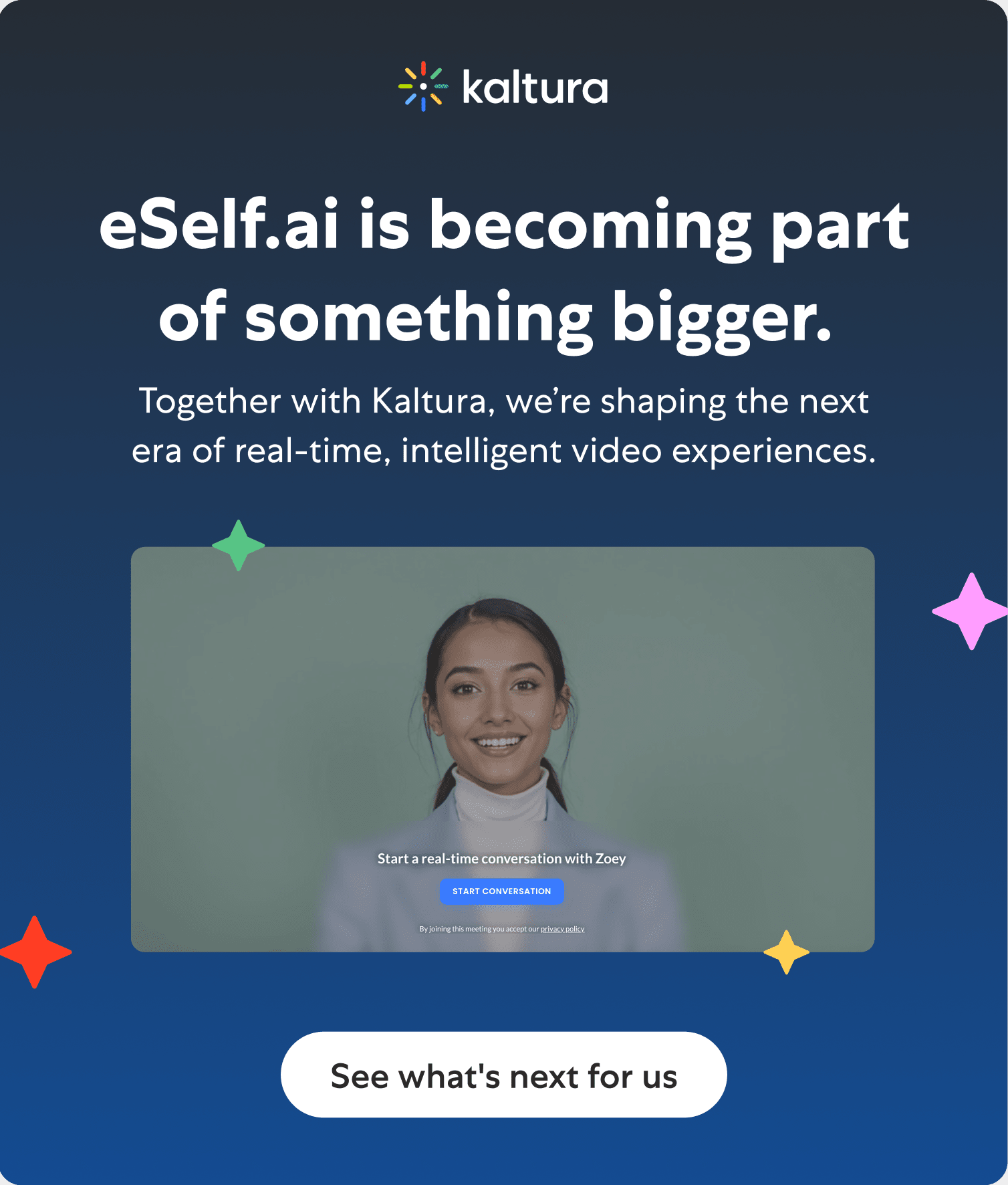Today chatbots have become indispensable tools for all online businesses. After all, they are the only ones capable of providing 24/7 customer service, processing thousands of requests simultaneously, and making each user feel like they are having a personalized conversation.
From simple rule-based systems to advanced AI-powered conversational agents, chatbots are revolutionizing how businesses interact with their customers. But with so many types of chatbots available.
Some of the most popular examples of chatbots include Siri from Apple, Alexa from Amazon, Sephora Virtual Artist, Google Assistant, Cortana, and Meta AI.
Chatbots: What They Are and How They Work
Chatbots are software applications designed to simulate human-like conversations with users, typically through text or voice interactions. They leverage technologies such as Natural Language Processing (NLP) and Machine Learning (ML) to interpret and respond to user inputs, providing instant support and information. These systems can handle a range of tasks, from answering frequently asked questions to assisting with complex customer service inquiries.
The types of chatbots vary based on their complexity and functionality. Some rely on predefined rules, while others leverage AI to learn and adapt over time. Understanding these different types of chatbots is crucial for businesses looking to implement the right solution.
Types of Chatbots
Chatbots come in a variety of forms, each serving specific functions and offering unique benefits. Below is an overview of the most common types, along with their key benefits.
1. Menu or Button-Based Chatbots
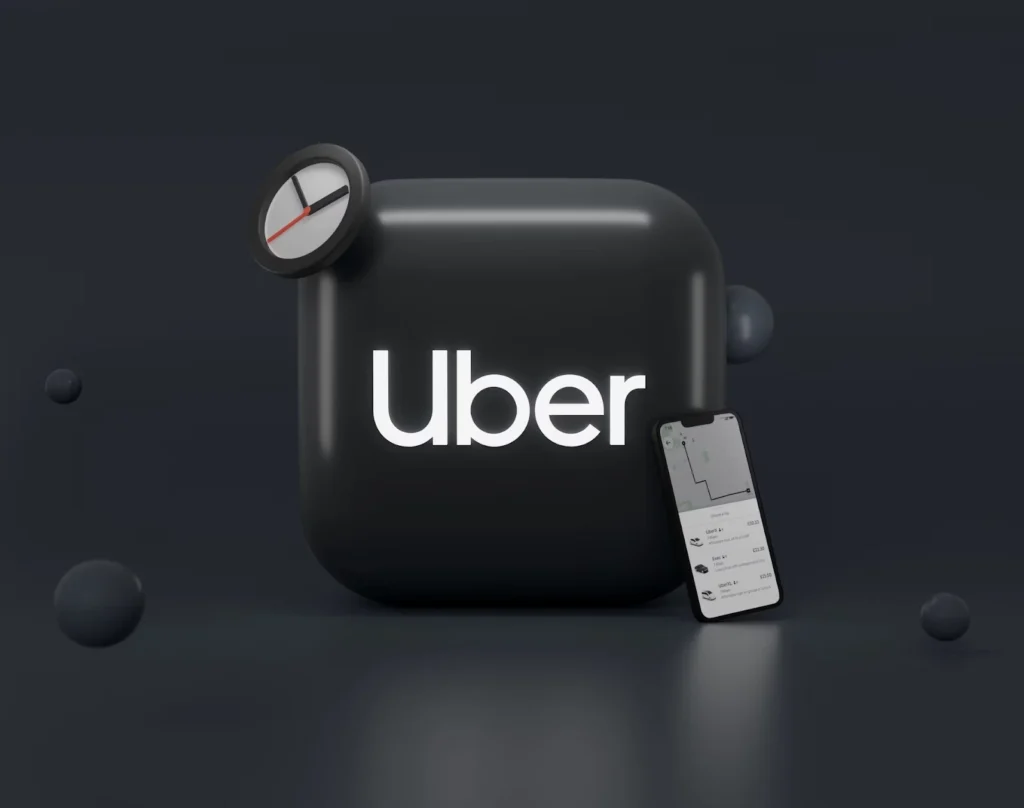
Menu or button-based chatbots are one of the simplest types of chatbots. They guide users through a series of options presented as buttons or menus. This structured approach simplifies navigation and ensures users receive relevant information based on their selections. These chatbots are easy to implement and are ideal for businesses with straightforward workflows.
Common Use Cases for Menu or Button-Based Chatbots
- Restaurants: Taking orders and reservations.
- Travel: Booking flights and hotels.
- Retail: Providing product information and discounts.
Benefits of Implementing Menu or Button-Based Chatbots
- User-Friendly: Simple and intuitive interface for users.
- Quick Implementation: Easy to develop and deploy.
- Efficiency: Streamlines processes like ordering and booking.
For example, Uber’s chatbot allows users to book rides and track drivers with just a few clicks.
2. Rule-Based Chatbots: The Basics of Predefined Conversations

Rule-based chatbots, also known as scripted chatbots, operate on a set of predefined rules and decision trees. They follow a structured flow, guiding users through a series of options to resolve their queries. These chatbots are ideal for handling straightforward tasks and are often used in industries like retail, healthcare, and banking. However, they lack the ability to understand context or learn from interactions, limiting their flexibility.
Common Use Cases for Rule-Based Chatbots
- Customer Support: Answering FAQs and providing basic troubleshooting.
- E-commerce: Assisting with order tracking and product inquiries.
- Appointment Scheduling: Booking slots for services like salons or clinics.
Benefits of Implementing Rule-Based Chatbots
- Cost-Effective: Easy to develop and maintain, making them ideal for small businesses.
- Consistency: Provide accurate and consistent responses to common queries.
- Quick Deployment: Can be implemented rapidly to address immediate business needs.
For example, Domino’s Pizza uses a rule-based chatbot to streamline the ordering process, allowing customers to place orders quickly and efficiently. Similarly, Bank of America’s Erica assists customers with account inquiries and transaction history, showcasing how types of simple chatbots can enhance user experience.
3. AI-Powered Chatbots: The Future of Interfaces
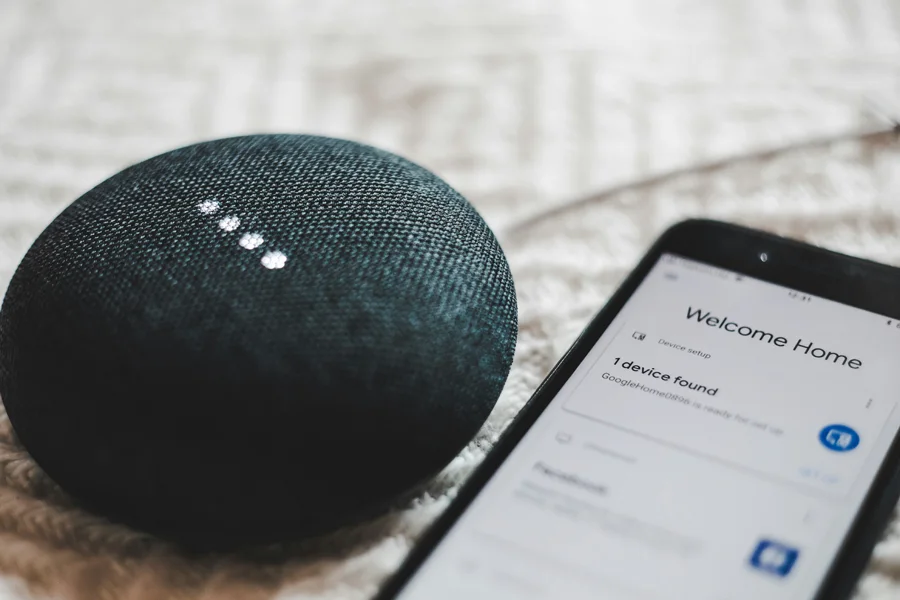
AI-powered chatbots are the next evolution in conversational technology. Unlike rule-based chatbots, they use machine learning and NLP to understand context, learn from interactions, and provide more human-like responses.
These types of AI chatbots, often referred to as “Level 3” chatbots in some contexts, can handle complex queries and improve over time, making them a powerful tool for businesses. “Level 3” chatbots represent the most advanced AI systems.
Common Use Cases for AI-Powered Chatbots
- Customer Service: Handling complex inquiries and providing personalized support.
- E-commerce: Offering product recommendations based on user preferences.
- Healthcare: Assisting with symptom checking and appointment scheduling.
Benefits of Implementing AI Chatbots in Businesses
- Enhanced Customer Satisfaction: AI chatbots provide personalized responses, improving user experience.
- Operational Efficiency: They can handle multiple queries simultaneously, reducing wait times.
- Cost Savings: Automating customer service reduces the need for large support teams.
Popular examples of different AI chatbots include Siri, Google Assistant, and ChatGPT. For instance, Sephora’s Virtual Artist uses AI to provide personalized makeup recommendations, while H&M’s chatbot helps customers find products based on their preferences.
4. AI Video Chatbots
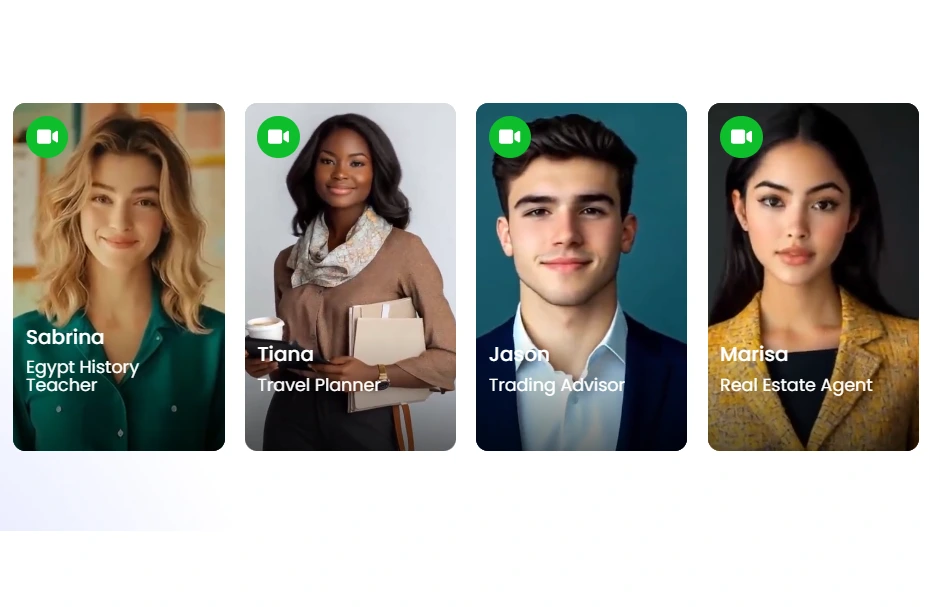
eSelf – first face-to-face interaction chatbot creates a more human-like and immersive experience. Unlike traditional text-based chatbots, Eself leverages advanced technologies such as facial recognition, natural language processing (NLP), and machine learning to enhance user engagement.
Video chatbots are particularly useful in industries like healthcare, education, and customer service, where personalized communication is critical. Whether assisting patients with virtual consultations, guiding students through interactive learning, or providing real-time support in customer service, Eself sets a new standard for AI-driven communication.
Common Use Cases for AI-Powered Chatbots
- eCommerce: Assisting with virtual consultations and patient engagement.
- Customer Service: Offering face-to-face support for complex inquiries.
- Education: Delivering personalized learning experiences.
Benefits of Implementing AI Chatbots in Businesses
- Personalized Engagement: Provides a more human-like interaction through video, building trust and rapport.
- Real-Time Communication: Enables dynamic interactions with customers in real-time.
- Efficiency: Handles multiple video consultations simultaneously, making it suitable for high-demand environments.
5. Hybrid Chatbots: Combining Strengths for Optimal Performance

Hybrid chatbots merge rule-based systems with AI capabilities, offering the reliability of predefined responses alongside the adaptability of AI. They use predefined rules for common queries and switch to AI for more complex interactions. This combination ensures consistent performance while allowing for more dynamic interactions.
Common Use Cases for Hybrid Chatbots
- Banking: Handling account inquiries and providing financial advice.
- E-commerce: Assisting with product recommendations and order tracking.
- Healthcare: Scheduling appointments and offering symptom-checking tools.
Benefits of Implementing Hybrid Chatbots
- Versatility: Can handle both simple and complex queries effectively.
- Improved User Experience: Combines the reliability of rule-based systems with the intelligence of AI.
- Scalability: Suitable for businesses with diverse customer needs.
For instance, H&M’s chatbot uses a hybrid model to help customers find products and answer style-related questions. Similarly, Amtrak’s Julie assists travelers with booking tickets and answering travel-related queries, demonstrating the versatility of hybrid chatbots.
6. Voice-Activated Chatbots: The Rise of Conversational AI
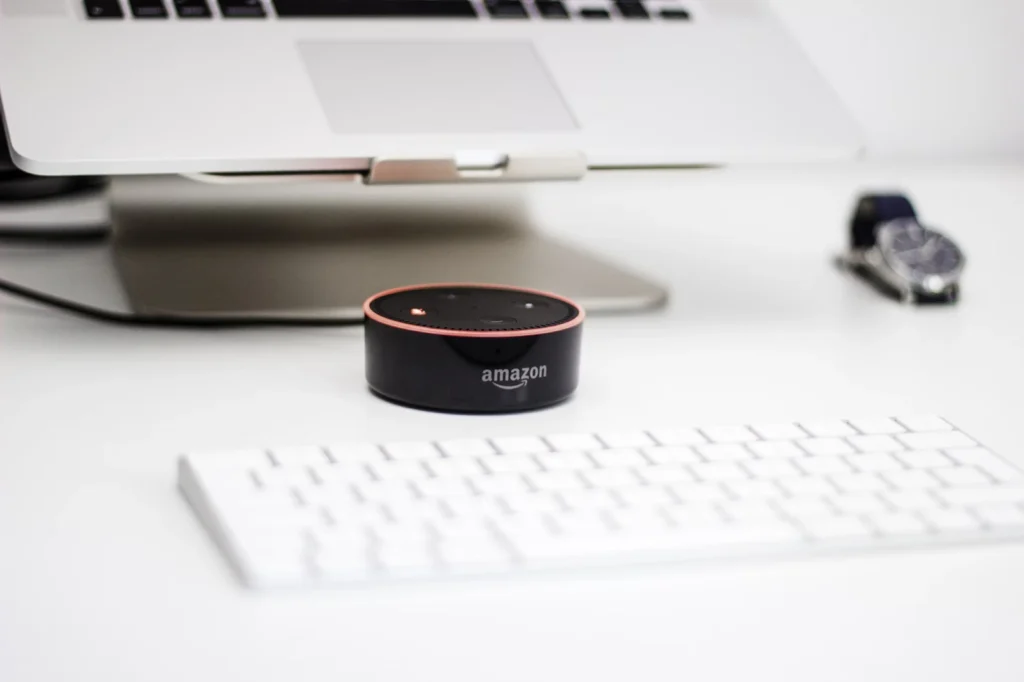
Voice-activated chatbots, like Amazon’s Alexa and Apple’s Siri, use voice recognition technology to interact with users. Their hands-free operation and natural interaction style have contributed to their growing popularity.
Common Use Cases for Voice-Activated Chatbots
- Smart Homes: Controlling lights, thermostats, and appliances.
- Customer Service: Handling inquiries via voice commands.
- Entertainment: Playing music, setting reminders, and providing news updates.
Benefits of Implementing Voice-Activated Chatbots
- Convenience: Hands-free interaction enhances user experience.
- Accessibility: Ideal for users with disabilities or those who prefer voice commands.
- Integration: Seamlessly integrates with smart devices and IoT ecosystems.
For example, Amazon’s Alexa helps users manage their smart homes, while Google Assistant provides real-time information and updates.
Custom Chatbots for Specific Needs
While general-purpose chatbots are versatile, specialized chatbots are designed to address specific business needs or industries. These chatbots leverage advanced technologies like AI, facial recognition, and generative models to deliver highly tailored solutions. Let’s explore some of the most impactful specialized chatbots and their applications.
7. Social Media Chatbots

Social media chatbots are designed to interact with users on platforms like Facebook Messenger, Instagram, and WhatsApp. They help businesses engage with customers where they already spend their time, offering seamless support and personalized interactions.
Common Use Cases for Social Media Chatbots
- Order Processing: Allow customers to place orders directly through social media platforms.
- Promotions and Offers: Send personalized discounts and promotions to users.
- Customer Support: Handle inquiries and resolve issues in real-time.
Benefits of Implementing Social Media Chatbots
- Increased Engagement: Reach customers on platforms they already use daily.
- 24/7 Availability: Provide instant responses, even outside business hours.
- Personalized Marketing: Deliver tailored promotions and recommendations based on user behavior.
- Streamlined Operations: Automate repetitive tasks like order processing and FAQs.
Starbucks’ chatbot on Facebook Messenger lets customers place orders, track rewards, and receive personalized offers. Similarly, H&M uses a chatbot to recommend outfits based on user preferences and style quizzes, making them one of the best examples of chatbots in the retail industry.
8. Generative AI Chatbots
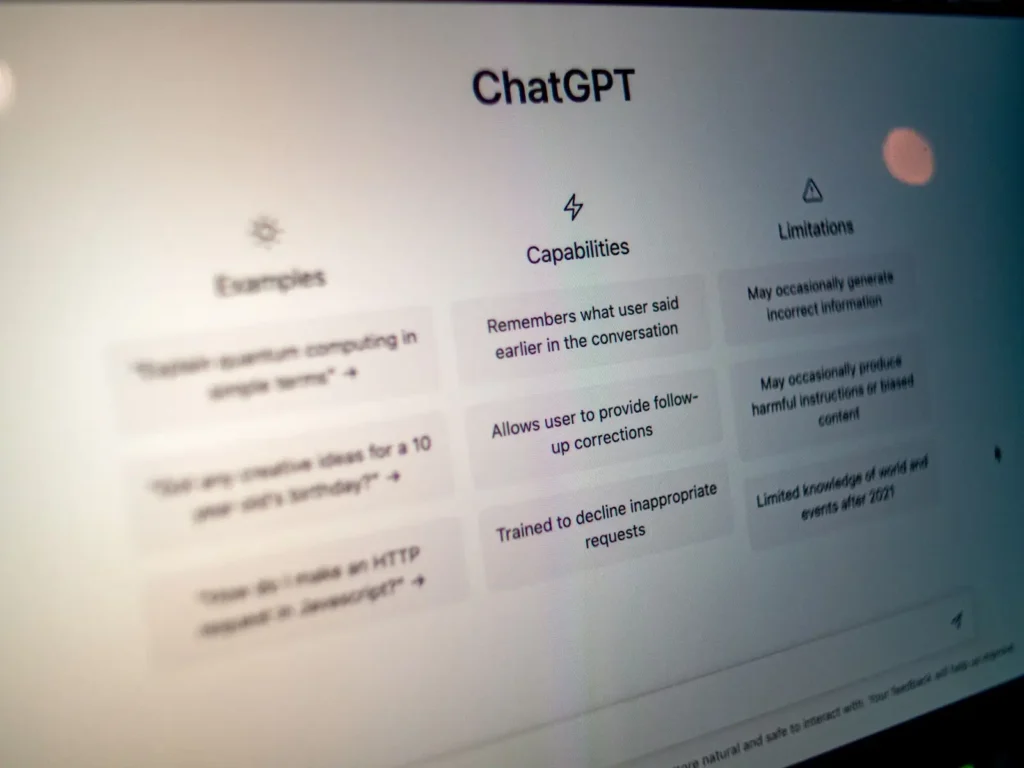
Generative AI chatbots, like ChatGPT, use advanced language models to create human-like responses. These chatbots are ideal for creative tasks, such as content generation, brainstorming, and even coding.
Common Use Cases for Generative AI Chatbots
- Content Creation: Generates articles, social media posts, and marketing copy.
- Brainstorming: Assists with idea generation and problem-solving.
- Personalized Interactions: Provides highly contextual and engaging conversations.
Benefits of Implementing Generative AI Chatbots
- Creativity and Innovation: Generates unique content and ideas, saving time for creative teams.
- Scalability: Handles large volumes of requests without compromising quality.
- Cost Efficiency: Reduces the need for human intervention in content creation and customer support.
- Enhanced User Experience: Delivers highly personalized and context-aware responses.
ChatGPT, for example, is widely used by businesses for content creation, customer support, and even coding assistance, showcasing its versatility and ability to handle complex tasks. Another notable example is Jasper.ai, a generative AI chatbot designed specifically for marketers to create high-quality content quickly, from blog posts to ad copy.
Tips How to Choose the Right Types of Chatbots for Your Business
Choosing the right chatbot for your business depends on your specific needs, goals, and the level of interaction you want to achieve. With so many types of chatbots available, it’s essential to align your choice with your business objectives, target audience, and budget. Here’s a guide to help you make the right decision:
- Customer Support: For handling complex inquiries, consider AI video chatbots or generative AI chatbots.
- Customer Engagement: To boost interaction, social media chatbots or AI-powered chatbots are ideal.
- Task Automation: For simple tasks like bookings or FAQs, rule-based chatbots or menu-based chatbots work best.
Budget & Scalability:
- Start with rule-based chatbots for affordability.
- Invest in AI-powered chatbots or generative AI chatbots for scalability and advanced features.
Test and Iterate: Start with a pilot program to test the chatbot’s effectiveness. Gather feedback from users and make adjustments to improve performance. For example, if you’re using a generative AI chatbot for customer support, monitor its responses to ensure accuracy and relevance.
Frequently Asked Questions About Types of Chatbots
What is a basic chatbot?
A basic chatbot is a rule-based system that follows predefined scripts to handle simple queries.
What is the difference between NLP and chatbot?
NLP (Natural Language Processing) is the technology that enables chatbots to understand and respond to human language.
What is the difference between Chatbot and ChatGPT?
Chatbots are software applications for automated conversations, while ChatGPT is a specific generative AI model developed by OpenAI.
